The ecommerce has ceased to be an option and has become a necessity for thousands of businesses looking to stay competitive. competitive, profitable and scalable. The online stores offer an unprecedented opportunity to reach more customers, automate processes, and improve shopping experience. However, "being online" is not enough. Creating an online store involves strategy, technology, design, content, trust and a user-centric approach.

What is ecommerce and why is it booming?
The ecommerce (o e-commerce) is the buying and selling of products or services through digital mediagenerally through a online store. This model has grown exponentially thanks to the increase in the use of smartphones, digital banking, marketplaces and the digital transformation of businesses.
In markets such as Mexico, the penetration of the ecommerce has broken records in recent years, with double-digit annual growth. This has been driven by:
- The post-pandemic change in buying habits
- Increased confidence in digital payments
- Logistical advances that enable fast deliveries
- The advent of tools such as Shopify and WooCommerce that make it easy to create a store without being a programmer
This boom has also created a highly competitive environment. It is no longer enough to have attractive products; it is now indispensable to have technology, automation, optimized content and a great user experience.

Ecommerce platforms: Which is the best option for your online store?
One of the most decisive steps in launching or scaling up an enterprise project is to ecommerce is to choose the online sales platform adequate. This decision has a direct impact on the design, the user experienceThe company has been able to improve its scalability, cost, security and operational efficiency. Not all platforms are the same, nor do they all adapt to any type of business.
Shopify
Shopify is an all-in-one platform with a focus on ease and scalability. It allows you to launch a online store quickly, without the need for technical knowledge. Ideal for SMEs who are looking for modern design, ease and growth without technical complications.
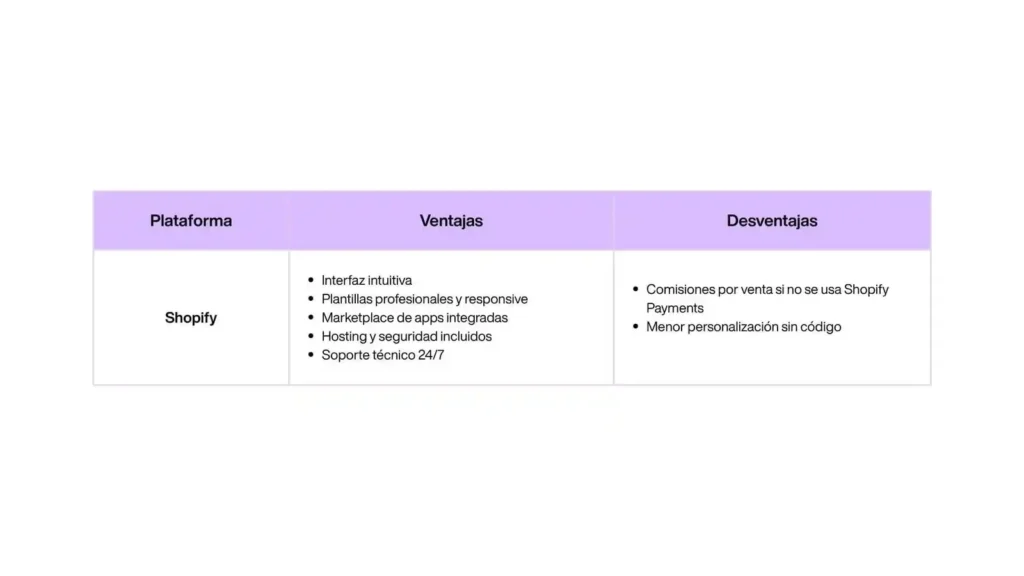
Advantages and Disadvantages Shopify Platform
WooCommerce
WooCommerce is a plugin of ecommerce for WordPress. Ideal for those who already have a site on this platform or need a customizable 100% store. Ideal for businesses with technical equipment or who value freedom of customization.
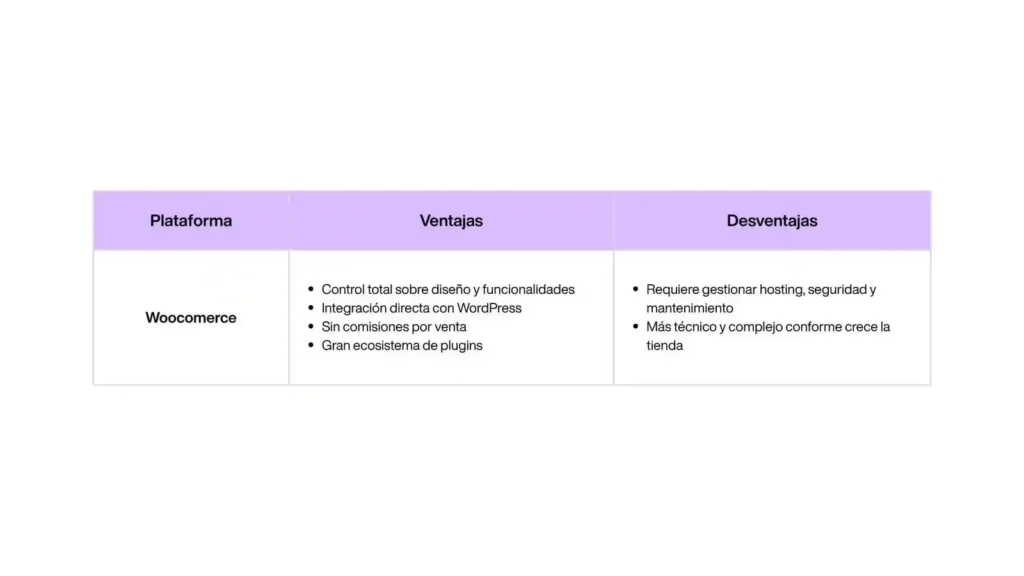
Advantages and Disadvantages of the WooCommerce Platform
WIX Ecommerce
WIX is a visual web site builder that has evolved into the ecommerceideal for those who value design without being complicated with code. Ideal for entrepreneurscreative and small catalog businesses.
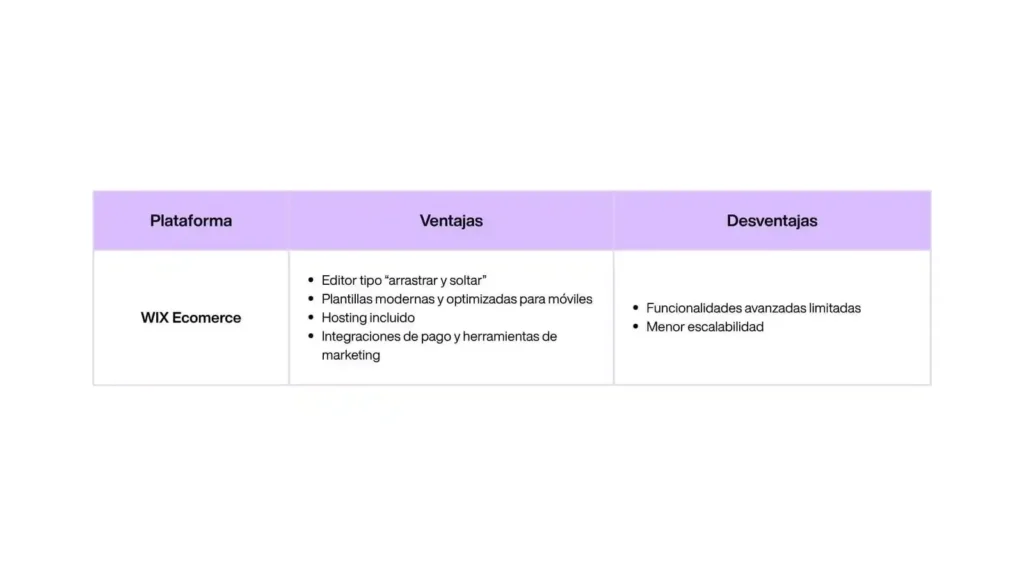
Advantages and Disadvantages WIX Ecommerce Platform
Tiendanube
Tiendanube is a Latin American platform designed for entrepreneurs selling in Mexico and other Spanish-speaking markets. Ideal for those who sellmainlyin LATAM.
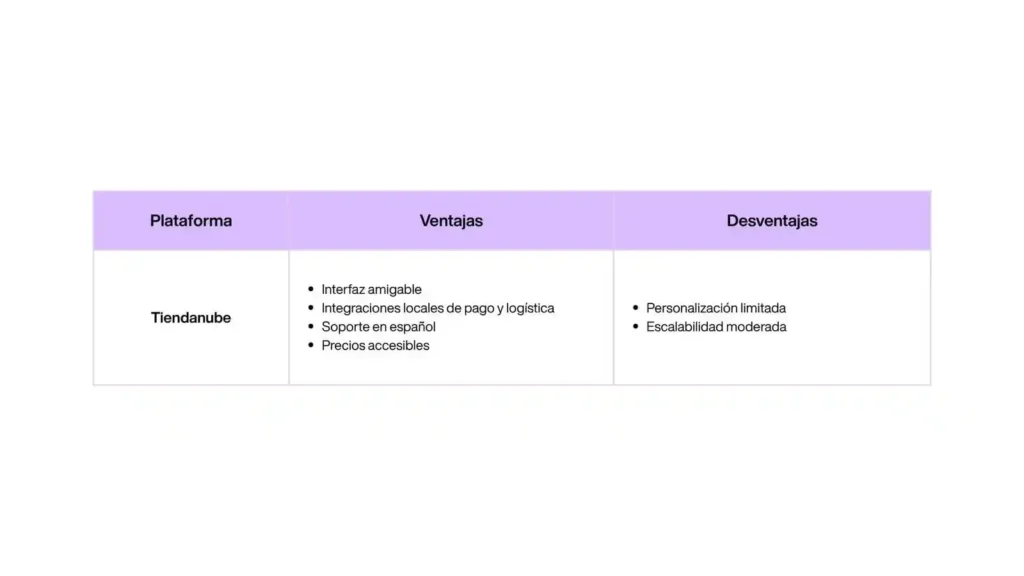
Advantages and Disadvantages Tiendanube Platform
Magento (Adobe Commerce)
Magento is a robust platform, now part of the ecosystem of AdobeThe new, highly flexible and technically powerful. Ideal for large companies or projects with high technical requirements.
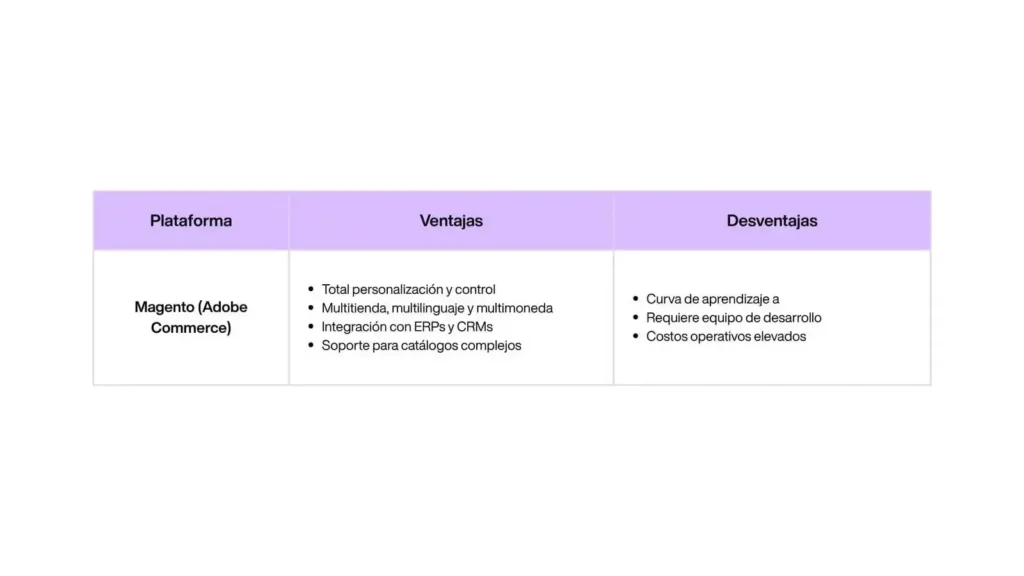
Advantages and Disadvantages Magento Platform (Adobe Commerce)
Comparison of ecommerce platforms
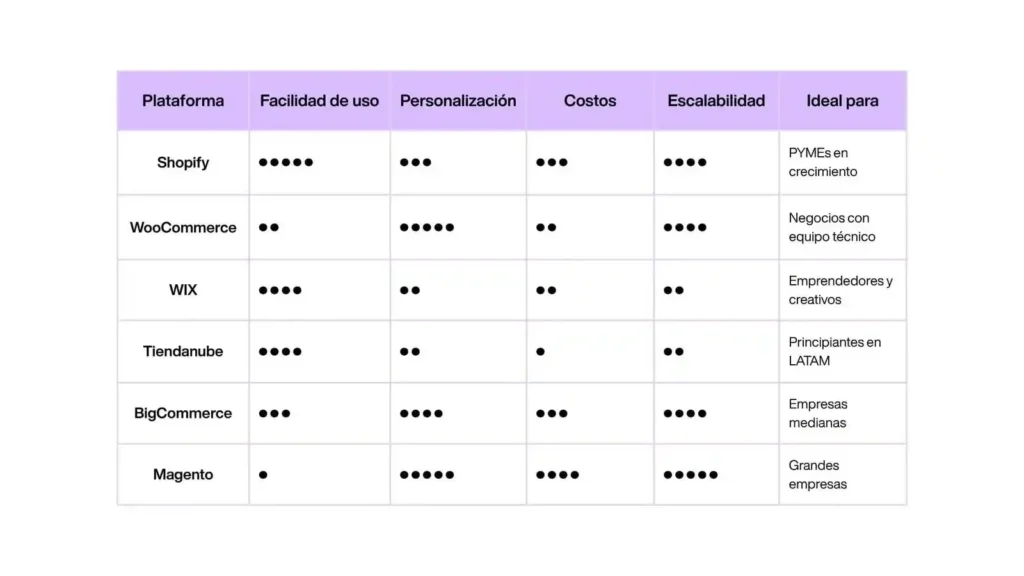
Additional recommendations
- Shopify or TiendanubeIdeal for those who have no technical experience and want to concentrate on selling from day one.
- WooCommerce: perfect if you already use WordPress or you want the freedom to customize at low cost.
- Magentorecommended if your operation requires multiple advanced functionalities, large catalogs or robust integrations.
- WIXa solid choice for visual businesses with a focus on design and speed of implementation.
If your goal is to grow in the medium to long term, make sure you choose a platform that allows you to scale without costly migrations.

Design and user experience is the key to convert visitors into customers.
Design is not just about what a product looks like. online storebut how it works. A good user experience (UX) can make the difference between a visitor who bounces in seconds and a visitor who bounces in seconds. customer who makes a purchase and returns.
In the competitive environment of the ecommerceoptimize the navigation, the visual design and user interaction is essential to achieve conversions.
- Clean, professional and responsive designYour store should reflect professionalism from the first impression. A cluttered, disorganized or unintuitive design drives away customers.
- Clear hierarchy and simple navigation: makes it easy for the user to find what they are looking for in three clicks or less. Menus should be logical, with well-defined categories and functional filters.
- Optimized product sheets: each product must have clear information, high quality photographs and visible action buttons.
- Frictionless purchasing process: a checkout complicated is one of the main causes of cart abandonment. Reduce steps, allow guest shopping and make the total cost clear.
- Trust and visual credibility: the design must also convey confidence. Some elements that inspire confidence:
- Verified ratings and reviews
- SSL Certificates visible
- Icons of recognized payment methods
- Clear shipping, return and privacy policies
- Personalization with AI: the use of artificial intelligence in ecommerce allows you to display recommended products, dynamic content and experiences tailored to the user based on their browsing or purchase history.
This not only enhances the experience, it also increases the average cart value and loyalty.
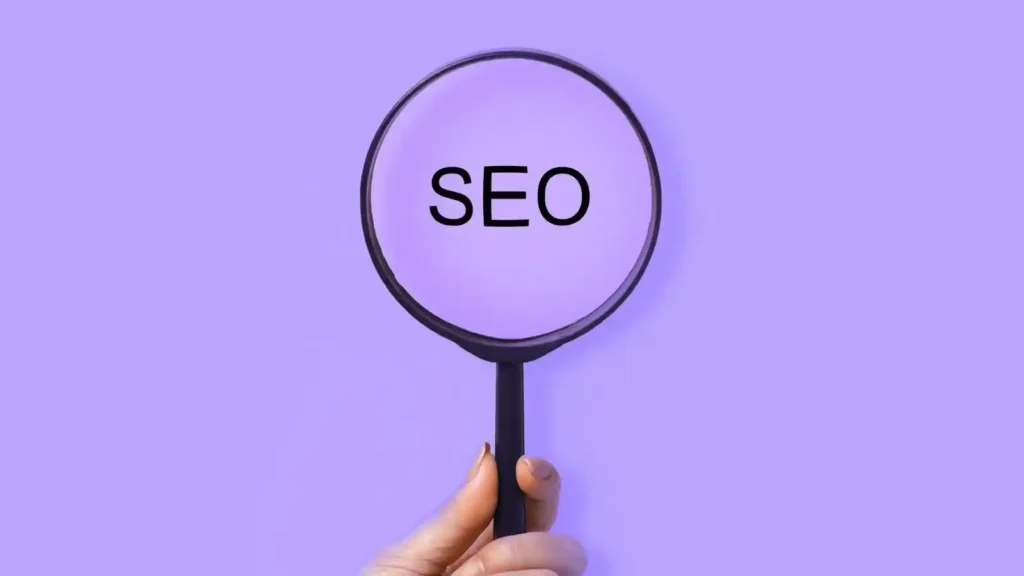
SEO for ecommerce
Have a online store visually appealing is not enough if it is not optimized for customers to find it. The SEO for ecommerce is key to positioning your products in the Google search results and attract organic traffic with purchase intent.

Ecommerce SEO Optimization Cycle
Keyword research
Any strategy of SEO in ecommerce begins with an in-depth investigation of keywords. Before writing any product description or category description, it is essential to identify the terms that your potential customers use when searching for similar products. Tools such as Google Keyword Planner, Semrush o Ahrefs allow you to find keywords both in terms of product (e.g. "running shoes") and intent ("buy running shoes"). This analysis will orient your store content towards real searches with purchase intent.
2. Optimized site structure
The architecture of your ecommerce should be designed to facilitate user navigation and indexing by search engines. search engines. Use clear categories no more than two or three levels deep, friendly URLs (such as /sportswear/men), active breadcrumbs to aid navigation, and make sure you have correctly configured your sitemap.xml and the file robots.txt. A clean structure improves both experience and positioning.
3. OnPage Optimization
Each product and category page should be optimized with key elements to improve visibility on Google. Usetitles (H1) descriptive containing keywords relevant, write meta descriptions between 140 and 160 characters, it uses alternative texts in the images, URLs clean and well-structured, and correctly applied, and labels H2 and H3 to organize the content. This attention to detail improves Google's and the user's understanding of the site.
4. Relevant and valuable content
Useful content continues to be one of the cornerstones of the SEO. Including a blog in your ecommerce can help you attract organic traffic. of users who are still in the consideration phase. Publish buying guides, product comparisons, answers to frequently asked questions or use cases. These contents not only educate, but also position your store as an authority in your niche, generating trust and increasing the chances of conversion.
5. Loading speed and mobile experience
Google prioritizes fast and mobile-optimized websites, especially on ecommercewhere the user experience directly affects sales. Optimize images using formats such as WebP or lossless compression techniques, activate lazy loading so that resources are loaded only when needed, use a CDN network to distribute content faster and eliminate unnecessary scripts that can slow down navigation.
6. Technical SEO
The SEO technician ensures that your store is understandable to search engines and is free of critical errors. Be sure to properly implement structured data (schema.org), use canonical tags to avoid duplicate content, properly manage 301 redirects and fix errors such as 404 pages. These technical aspects help maintain the health of your site and avoid penalties in search rankings.
7. Backlinks strategy
Inbound links from relevant sites continue to be one of the most important factors for the positioning in Google. Develops a strategy to achieve backlinks quality, either through collaborations with influencers, articles in specialized blogs, mentions in the media or digital public relations. The more relevant links pointing to your ecommerce, the higher your authority and visibility in search results.

Payment methods, security and consumer confidence
One of the major factors influencing the conversion of a company's online store is the trust. In markets such as Latin America, where digital fraud still raises concerns, offering security and a variety of payment methods is essential.

Payment methods you should offer
Consumers are looking for flexibility at the time of payment, so it is essential to offer a variety of options to suit your needs. Using gateways such as StripeConekta, Openpay or MercadoPago allows centralizing multiple methods in a single efficient integration. It is advisable to accept credit and debit cards such as Visa, Mastercard or American Express, as well as allowing bank transfers for those who prefer traditional channels. Deferred or installment payments through solutions such as KueskiPay or Aplazo have also gained popularity, especially for higher-value products. In addition, integrating digital wallets such as PayPal, Apple Pay or MercadoPago improves convenience and speed. Finally, offering cash payment through OXXO Pay or convenience stores such as 7-Eleven allows reaching a customer segment that still prefers to use cash.

Safety as a priority
Building trust is key in any online store. Your ecommerce must transmit security from the very first click, starting with a SSL certificate active to secure browsing under the https protocol. Displaying trust seals such as Norton or Visa Secure helps to reinforce the user's perception of security. It is also essential to have a clear privacy policy, easily accessible from any part of the site. In addition, complying with local regulations such as the Federal Law for the Protection of Personal Data in Possession of Private Parties (LFPDPPP) in Mexico is not only a legal obligation, but also a sign of professionalism and commitment. A secure store inspires confidence, reduces cart abandonment and significantly improves conversions.

Social proof that builds trust
The real opinions increase confidence and help convince undecided users. It is essential to integrate them at key points of the site, such as reviews and ratings visible directly on the products, as well as testimonials or success stories strategically placed on the home page or on specific landings.
It is also advisable to display stars, scores and ratings prominently to reinforce the positive perception of the product or service. Even real-time behavioral indicators, such as "12 people are viewing this product" or "5 sold today," can generate a sense of urgency and social validation. All of these trust signals build a perception of popularity and quality, which drives conversion without resorting to aggressive discounting.

Clear guarantees and policies
A online store must offer return, refund, shipping and exchange policies that are clearly written and easy to understand. These policies should be visible from the main menu or in the footer so that the user can find them effortlessly. Avoid technical or confusing language: the more transparent you are, the more trust you generate. By eliminating uncertainty about what happens if something goes wrong, you increase the likelihood that the user will be able to find it. the customer feels comfortable and completes the purchase.

Efficient logistics and automated customer service
A strategy of ecommerce effective does not end when the user clicks "buy". The after-sales experience can turn a sale into a long-term relationship... or in a claim.
- Inventory management: A competitive store must synchronize its inventory in real time to avoid overselling or mismanaging out-of-stocks.
- Varied and clear shipping options: offering multiple delivery methods is key to satisfy different preferences. It includes standard and express shipping, real-time tracking, integration with parcel carriers (DHL, Estafeta, Redpack, etc.) and free shipping over a certain amount.
- Omnichannel and automated customer service: a online store must be available when the customer you need it. The service can combine traditional channels with automation efficient: live chat with automated responses, bots on WhatsApp or Messenger, help center with knowledge base and mail follow-up with order updates.
- After-sales and loyalty: A satisfied customer can come back many times. Use post-purchase thank you emails, personalized history-based offers, automated satisfaction surveys and rewards programs to build loyalty.
- Automation with artificial intelligence: the AI applied to the ecommerce allows you to automate tasks such as product recommendations, order tracking, abandoned cart recovery via email and dynamic chatbots. This reduces the operational burden and improves the customer experience. customer in real time.

How artificial intelligence is transforming ecommerce
The artificial intelligence has become a key driver of innovation in the e-commerce. It's no longer a future promise, it's a reality that is impacting everything from how users find products to how brands manage inventory, automate marketing and personalize experiences. With the recent introduction of the Google Search AI modethe visibility of the online stores will also depend on how smart, relevant and useful your content and platforms are.
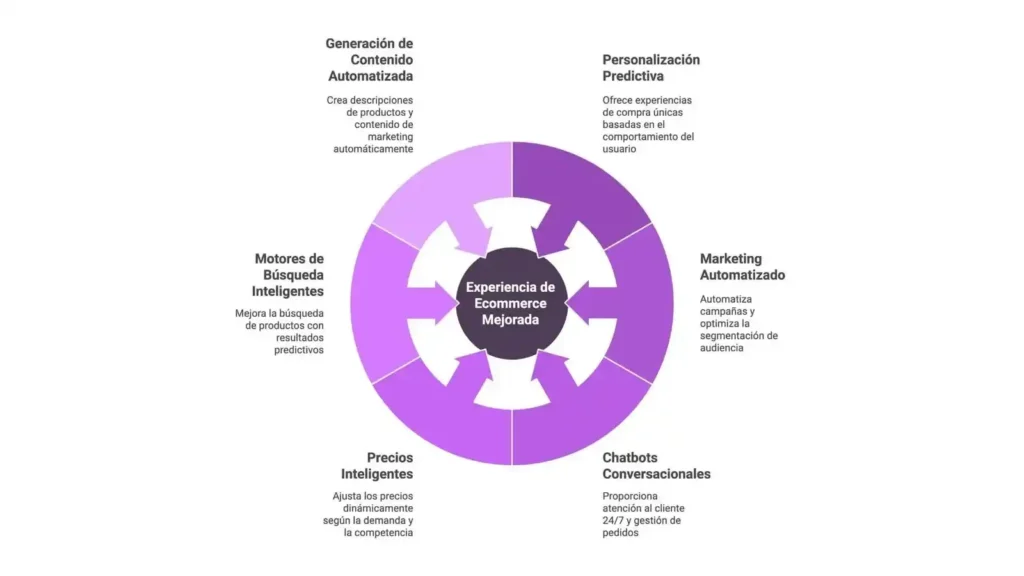
Transformation of ecommerce through AI
1. Real-time predictive personalization
The platforms of ecommerce can now offer unique shopping experiences for each user by analyzing variables such as browsing behavior, purchase history, location and preferences. Thanks to AI, it is possible to display suggested products instantly, adapt promotional banners or change the order of categories according to detected interest. This not only improves user experiencealso increases conversion and average ticket.
2. Automated and contextual marketing
The artificial intelligence allows you to automate campaigns that used to require hours of manual work. Today it is possible to send mailings with personalized products, recover abandoned carts with contextual messages and run A/B tests that optimize themselves in real time. In addition, the AI tools segment audiences by behavior or purchase intent, improving the effectiveness and return of each marketing action. marketing.
3. Conversational chatbots and 24/7 support
Virtual assistants based on AI have evolved. Beyond answering basic questions, they now understand complex intentions, recommend products, manage orders and even solve after-sales problems. Integrating them into channels such as WhatsApp or Messenger reduces the operational burden on the team and guarantees immediate attention at any time.
4. Smart pricing and inventory management
The AI allows dynamic pricing that adjusts in real time according to demand, user behavior or competitor movements. In addition, predictive algorithms help to better plan stock, anticipating buying trends, avoiding oversales and reducing losses due to obsolete or out-of-stock products.
5. Smarter internal search engines
One of the main causes of abandonment in ecommerce is the difficulty in finding products. With AIInternal search engines are now predictive, understanding synonyms, correcting misspellings and suggesting more relevant results. This significantly improves the browsing experience, reduces bounce rate and increases conversion.
6. Automated content generation
For stores with large catalogs, the AI provides an efficient solution for creating product descriptions, product titles, product SEOand social network posts automatically. Tools such as ChatGPTJasper, Jasper or Copy.ai are already part of the content stack at ecommerce competitive, allowing production to be scaled up without compromising quality or time.

Trends: automation, personalization and omni-channeling
The world of ecommerce never ceases to innovate. If you have a online store or you are about to launch one, knowing these trends is key to avoid being left behind. Brands that understand and apply these practices are able to stand out in an increasingly competitive environment, where the technologythe user experience and the artificial intelligence in e-commerce are the pillars of success.
Automation in key processes
The automation on ecommerce allows you to optimize resources, minimize errors and improve operational efficiency. It's no longer just about selling, it's about scaling your business intelligently.
Areas of impact:
- Order and inventory management: real-time synchronization between channels, automatic stock.
- Digital marketing: abandoned cart emails, push notifications, dynamic ads.
- Product updates: descriptions, prices and availability without manual intervention.
- Invoicing and reporting: integration with accounting and tax tools.
Recommended tools:
- Klaviyo, Zapier, Mailchimp o ActiveCampaign: automation from marketing without the need for programming.
- Shopify and WooCommerceNative integrations to automate common tasks of your store.
The automation not only reduces operating costs, but also improves the customer experience. customer by offering fast and frictionless processes.
2. Personalization beyond the name
The personalization with AI allows you to go far beyond the typical "Hello, Juan". Today, the most successful brands use data to create hyper-relevant experiences:
- Display products according to location or local climate.
- Suggest sizes or variants according to previous purchases.
- Offer discounts based on customer life cycle.
- Adapt store navigation to real-time behavior.
Key technologies:
- Dynamic Yield, Nostoor customized systems integrated to sales platforms like Shopify
Result: higher conversion rate, more time on site and more recurring sales.
3. Real omnichannel strategy
Today the customer you can start your purchasing process on social networks, continue on your web site and finish in a physical store. Your ecommerce strategy must adapt to it.
Pillars of an omnichannel strategy:
- Unification of inventories between sales platforms physical and digital.
Integration of social networks such as Instagram Shopping, TikTok Shop o Facebook Shops. - Use of CRMs such as HubSpot o Salesforce to centralize information and personalization.
- Seamless experiences from any channel (site, app, marketplaces).
The e-commerce in Mexico and LATAM show a growing adoption of this strategy to gain loyalty and scale sales.
4. Video and live shopping
Video content is today's best digital marketer. And if you combine it with live shoppingYou create an immersive, real-time experience that generates immediate trust.
Applications:
- Show how the products are used.
- Live demonstrations with purchase option.
- Create internal micro-influencers or brand ambassadors.
Especially useful for:
- Fashion, technology, cosmetics and gadgets.
Tip: Platforms such as YouTube Live + Shopify allow you to integrate purchases directly from the videos.
Visual content improves conversion rates and aids in the SEO for ecommerceby increasing the time spent on the site.
5. Sustainability as a competitive advantage
More and more buyers value the impact of their decisions. Being a online store responsible not only improves your image, it can also be the deciding factor in a sale.
Best practices:
- Ecological shipments or recyclable packaging.
- Certifications such as Fair Trade or local products.
- Featured sections for sustainable items.
- Transparency in processes and suppliers.
Being sustainable is not a fad: it is a competitive advantage growing in the ecommerce modern.

Boost your online store with an ecommerce strategy that does convert
Your store must not only exist: it must sell, grow and build loyalty.
At Keycode we design optimized, automated, secure and ready to scale from day one.
Ready to launch your ecommerce or improve the one you already have?
We accompany you throughout the process with technology, design and strategy focused on results.
Written by Barbara Cabrera/Marketing Analyst




